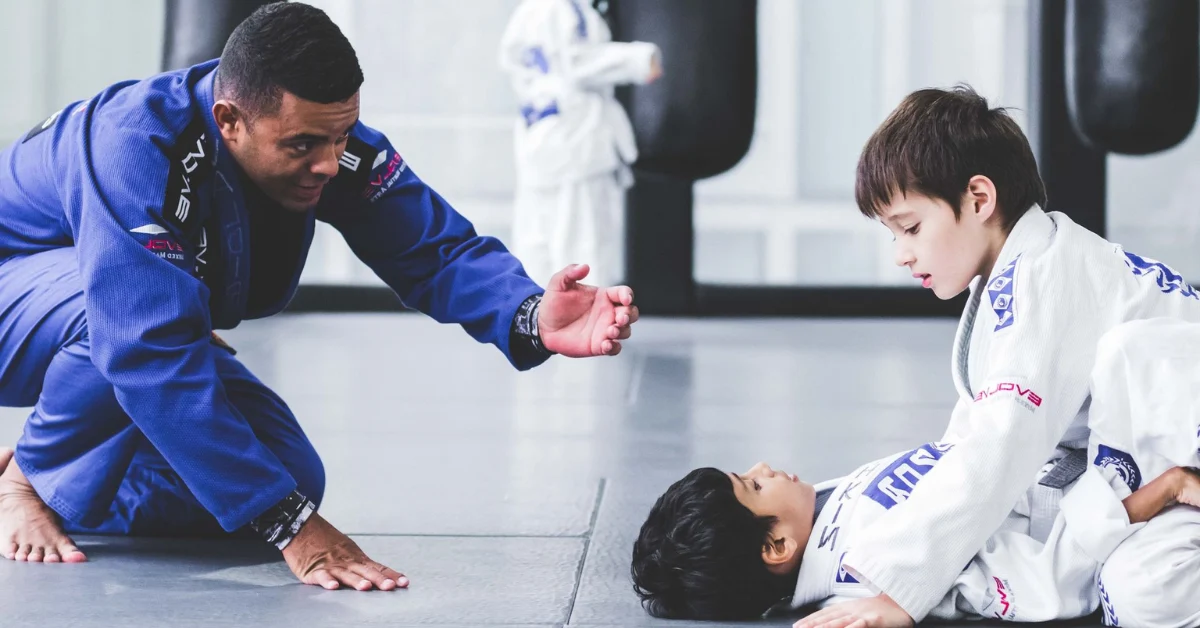No one wants their child to have nothing to protect them from bullies. They don’t have to be, though. Parents can help their kids stand up to bullies at school and elsewhere in many ways. By preparing them ahead of time, you will give them the skills they need to deal with bullies.
More importantly, you’ll help them build self-confidence and inner strength, which will serve them well for the rest of their lives. So let’s check out the 9 most important techniques for Kids Self Defense.
Kids Self Defense
Most people think of self-defense as hitting back or doing something else physically to protect themselves. But in a wider sense, self-defense also means taking steps to stop problems before they start. It also means responding to a bully’s attempts to scare you by being forceful. Talk to your child about these ways to defend themselves to help them avoid being bullied.
Act Confident
One of the best ways to stop your child from being bullied is for him or her to feel good about himself or herself and act confident. When kids slouch and look away, they can look weak and easy to pick on. Bullying happens more often to children who don’t like themselves, which is sad but true.
- A simple way to give off positive, assertive energy is to walk with purpose straight to their goal. They should walk with their eyes up and their shoulders back.
- When people make normal (not aggressive) eye contact with the people around them, it shows that they are confident and a leader.
- Smiling at other people makes you feel closer to them and boosts your own self-esteem. It also helps keep people from being alone, which can lead to bullying.
- Most of the time, it works well to talk to a bully in a neutral, calm way. They don’t have to answer to any mean words. Instead, they can say “Sorry” or “I’m going to class, see you later.” They might also just want to look the bully in the eyes and ignore what they say.
Help your child learn how to move in a way that shows they are sure of themselves. These are good ways to do things.
Stay In A Group
When someone is with a group of friends, bullies are less likely to pick on them. Make sure your child knows it’s best to stay with one or more friends when they can. This is especially true when they are in places like the cafeteria, playground, bus, bathrooms, or dressing rooms where bullying is common.
If your child doesn’t have any friends, you should try to help them make some. Bullying can be stopped by even just having one close friend.
Trust Your Gut
Teach your kids to pay attention to what’s going on around them. You don’t want them to be afraid all the time, but if they are likely to run into a bully, they should put away their cell phones and stay alert.
Your child should follow their instincts and leave a place where something doesn’t feel right. If that’s not possible, it’s time to use other skills, like confident body language, an authoritative voice, and talking to other people. Your child can escape being mugged or hurt as an adult if they pay attention to what’s going on around them.
Concentrate On Flight, Not Fight
Sometimes children fail to recognize that when things appear to be heading in the wrong direction, they should just turn around and walk away. Assure your child that walking away is not a cowardly act. Instead, remind them that leaving an escalating situation requires courage.
Instill in your children the importance of removing themselves from a situation before it becomes out of control. One of the greatest strategies to prevent bullying situations is to recognize when a situation is likely to deteriorate and to walk away.
When confronted with a bully, the best option is to flee rather than fight. Fighting can swiftly escalate into violence and injury. Instead, children should move away and inform an adult of what is going on.2 They may wish to discuss their concerns with a coach, parent, school counselor, principal, or instructor.
Use An Assertive Tone Of Voice
If your child does find himself or herself in a potential bullying position, speaking confidently and assertively can assist to diffuse the situation. Bullies are frequently seeking an easy target. A strong, confident speech, like confident body language, may lead bullies to back down. Encourage your children to talk assertively at home so that it will come naturally when they are in a difficult situation.
Draw Attention
Make it clear to your children that making a lot of noise is not only allowed but encouraged if someone is threatening or physically harming them. They can shout, yell, or scream in addition to having a powerful voice. The goal is to deter a bully by drawing attention to the problem, particularly from adults or teachers.
This strategy is also useful if the youngster is being attacked by a stranger during an abduction attempt. It’s crucial to realize, however, that each bullying situation is unique. If your child is not being physically assaulted by the bully and can leave the situation safely, that is the best option. Yelling at them may exacerbate the situation.
As it is very important to keep your kids safe by teaching them self defence tequniques, we gotta train them for their future too. So Prepare your kids for the future with our selection of the top 5 coding programs designed specifically for children.
Attend A Self-Defense Course
You should think about enrolling your child in a self-defense class. Taekwondo is a popular sport among children. While it is commonly considered one of many martial arts disciplines, taekwondo was originally developed as a self-defense strategy. The American Taekwondo Association provides a variety of alternatives for youngsters.
Taekwondo and other martial arts also instill confidence and self-control in children. Diffusing bullying scenarios frequently entails learning how to respond to a situation in a calm and confident manner before it escalates to physical bullying.
Use Self-Defense Methods
Although encouraging your child to fight is never a good idea, there are self-defense tactics they can utilize if they are assaulted. They can, for example, learn how to block a punch or loosen a bully’s fingers from their wrists, as well as how to break free when bound.
Check with your school district for self-defense policies. When physical violence occurs, some schools have a zero-tolerance policy and will suspend both the bully and the victim. If your child employs physical self-defense techniques, make sure you understand the potential consequences.
A Thought From Verywell
Because bullying can have long-term consequences, it’s vital to talk with your child about how to avoid it or cope with it if it can’t be avoided. Even if you can’t always keep an eye on your child or teen, you can teach them how to respond to bullying when they’re away from home.
You will also be providing your youngster with tools that will benefit them as they grow into independent adults. Unfortunately, bullying does not always end after the school year ends. By teaching your child how to deal with bullies of all ages, they will be better ready to deal with all types of challenging situations in life.
Thank you for reading! We hope you’ll bookmark Thetecheducation.com and come back for more great content.




